
Wine Literature of the World
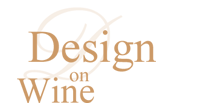
Design On Wine - Sponsored by AQ Australia
A Quick History of LabellingWe tend to use the words 'sticker' and 'ticket' loosely these days, unaware that we're dredging through the very origins of product labelling. Etiquette referred to the rigid rules of behaviour at court, as advertised on slips of paper placed at strategic spots around the place. That gave us the ticket. By the early eighteenth century, smart printers had worked out how to print sheets of tickets, cut them out, and glue them to bottles: estiquier: sticker.
Labels first concerned themselves with the written word. They provided very basic information about the product, usually scored by hand, according to the fashionable script of the day. Embellishments, like pictorial borders, began appearing in the 16th century. Yet when Thomas Jefferson was appointed Ambassador to France in 1785, he had his precious collection of vintage Lafite bottles simply and elegantly etched with two cursive letters: T J . Paper labels were not yet normal practise in the cellars of the stylish rich. Actual illustrations gradually became more common aspects of labelling throughout the 18th century, and before long the whole thing became what we now call packaging: not just an identifying device, but one which warns, advises, promotes, and sells the item. Things took a turn when Aloys Senefelder invented lithography in 1796, making it possible to print etiquettes in up to 12 colours. By then the modern typeface designs of Bodoni and Didot were in circulation. A few years later Niepce was discovering photography, and marketers were pushing for new technologies to wrap all this evolution and invention around their products, which were, more and more, being mass-produced. Throughout the latter part of the 18th century, malaga, madiera, cognac, canary sack, gin and ale began habitually sporting fashionable labels, with the famous, and instantly recognised, red triangle of Bass Ale becoming the world's first registered trademark. In 1895 patents were registered in Germany for the first bottle labelling device. This invention had been pushed along as the mass production of bottles improved. Early in the 1900s the west realised the potential of the ancient Japanese art of silk screening, and began adapting it to print directly onto containers like glass, or to improve the quality of other aspects of the printing and labelling processes.
|
|
Copyright and this website | Disclaimer | Privacy | Feedback | Accessibility | FOI |
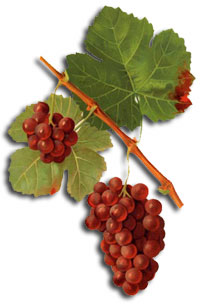
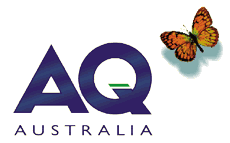 AQ
Australia is Australia’s most environmentally friendly wine
label printer. There’s no product that so proudly carries ‘Product
of Australia’ on its own packaging than Australian wine and
AQ Australia is proud to be the industry’s foremost wine label
printer. AQ transcended traditional printing methods, in 1995, when
they became the first totally waterless printer, providing major benefits
to the environment. No other printer in Australia can boast more experience
with this environmentally sound process, delivering brighter and better
definition, tougher scuff resistance and faster delivery times.
AQ
Australia is Australia’s most environmentally friendly wine
label printer. There’s no product that so proudly carries ‘Product
of Australia’ on its own packaging than Australian wine and
AQ Australia is proud to be the industry’s foremost wine label
printer. AQ transcended traditional printing methods, in 1995, when
they became the first totally waterless printer, providing major benefits
to the environment. No other printer in Australia can boast more experience
with this environmentally sound process, delivering brighter and better
definition, tougher scuff resistance and faster delivery times. 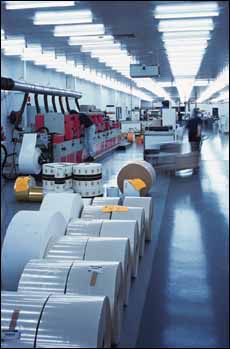 Labelling,
as we know it, was rare at the beginning of the 18th century. Apothecaries
had long used strips of paper to record details of their potions.
They tied these to the necks of their bottles by cord. The Chinese
has used marked silk wrapping to identify things for many centuries;
other civilisations has used marked clay tablets, stone, papyrus and
parchment.
Labelling,
as we know it, was rare at the beginning of the 18th century. Apothecaries
had long used strips of paper to record details of their potions.
They tied these to the necks of their bottles by cord. The Chinese
has used marked silk wrapping to identify things for many centuries;
other civilisations has used marked clay tablets, stone, papyrus and
parchment. 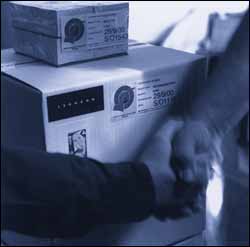 Now
we have self-adhesive stickers, eco-friendly solvent-free waterless
printing, and printing screens finer than the old silksmiths would
ever have dreamed of. The bar code is already outmoded by reactive
chips which can be printed into the paper of a label, and now we even
see the arrival of the label which includes a chip with its own printed
aerial, so it can be tracked around the globe by satellite, and can
be coded irrevocably with the details of every transaction and point
of sale that particular item goes through. It's etiquette, see.
Now
we have self-adhesive stickers, eco-friendly solvent-free waterless
printing, and printing screens finer than the old silksmiths would
ever have dreamed of. The bar code is already outmoded by reactive
chips which can be printed into the paper of a label, and now we even
see the arrival of the label which includes a chip with its own printed
aerial, so it can be tracked around the globe by satellite, and can
be coded irrevocably with the details of every transaction and point
of sale that particular item goes through. It's etiquette, see. AQ
AUSTRALIA
AQ
AUSTRALIA